The SDO Team
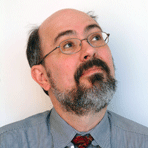
SDO Project Scientist
Undergrad: BS in Physics, University of Delaware
PhD: PhD in Physics, University of Florida
What do you do as SDO Project Scientist?
While the satellite is still on the ground, it is my job to make sure that changes to the satellite don't affect the science of it, or our ability to make observations.
What do you like most about your job?
My favorite part of my job is working with other scientists. Most of my time is spent in meetings. However, which I don't like too much.
When did you decide you wanted to work for NASA?
When I was growing up, I didn't know what I wanted to be because I wanted to be everything. I didn't decide to go into physics until I was an undergraduate and was forced to make a decision. I thought physics was interesting enough, so I pursued it.
Where did you go to school and what degrees did you get?
I got my undergraduate degree from University of Delaware and my PhD from the University of Florida. Both were in Physics.
What was the first job you ever had?
The first job I ever had was working at Burger King, specializing in french fries.
How did you come to actually work for NASA?
Before I became a civil servant for NASA, I was a contractor here for 15 years. I became a civil servant in 2005 when I accepted the job of SDO Project Scientist.
How long have you been working for NASA?
Well lets see... I worked for 15 years as a contractor and accepted a civil servant position in 2005 and we are now 2006... I guess you could say that I have been working for NASA for over 16 years!
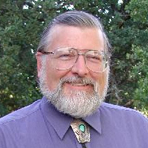
HMI Principal Investigator
What do you do as SDO's HMI Principal Investigator?
I try to coordinate the efforts of a diverse group of scientists and engineers to develop the best science investigation we can with the resources available.
What do you like most about your job?
What I like most is the anticipation that we may discover something interesting and useful about the inner workings of the sun.
When did you decide you wanted to work for NASA?
I was in the 6th grade when Sputnik was launched, and the US followed shortly with our first satellites. That, plus a movie showing a scientist launching a balloon to measure cosmic rays, caught my interest. When I was about to start college, a friend gave me a set of pictures taken by the Ranger mission that took pictures as it crashed into the Moon. But then I got sidetracked with physics and never have worked for NASA. I now work at Stanford and am pleased that NASA is supporting our work.
Where did you go to school and what degrees did you get?
I went through high school in southern California then attended the University of California, Berkeley, to study Physics for both my B.A. and Ph.D. degrees.
What was the first job you ever had?
Besides mowing the neighbors' lawns and delivering the local newspaper when younger, my first adult job was a summer position working at the Union Oil Research Lab filling in for lab technicians on vacation.
How did you come to actually work for NASA?
Never have worked for NASA, but my PhD research involved analysis of data from the Explorer 33 and 35 missions to study the interplanetary magnetic field. Then, 15 years later I led the SOHO Michelson Doppler Imager (MDI) investigation. MDI showed that we could actually study the interior of the sun but needed a better instrument. SDO/HMI followed after 6 years of further study. Now, another 6 years, and we are about ready to put SDO in the sky and make the HMI and AIA and EVE instruments useful.
How long have you been working for NASA?
I have been using data obtained by NASA missions for more than 40 years. I am presently a Professor of Physics at Stanford University.

AIA PI, Lockheed Martin
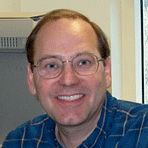
EVE PI
Undergrad: BS in Physics, Rhodes College
Masters: MS in Physics, Johns Hopkins University
PhD: PhD in Physics, Johns Hopkins University
What do you do as the EVE PI?
As EVE PI, I help define the science objectives for EVE, manage the EVE project, review the engineer hardware and software designs, support instrument calibrations, and will eventually support the analysis of the flight data.
What do you like most about your job?
I enjoy most the challenges of designing and defining new instruments and missions and the excitement in the pursue of new results in analyzing the data from the satellite missions.
When did you decide you wanted to work for NASA?
While my interest in space missions go way back to elementary school days, my first NASA opportunity arose during my junior year in college thanks to my physics professor, Dr. Jack Taylor, at Rhodes College.
Where did you go to school and what degrees did you get?
I received my BS in Physics from Rhodes College. I then went on to Johns Hopkings University were I got my Masters and PhD degree again in Physics.
What was the first job you ever had?
I worked as stock boy / cashier in a Piggly Wiggly grocery store for 3 years while in high school.
How did you come to actually work for NASA?
I am not a NASA employee. However, I have been working on NASA projects since 1982, first at Johns Hopkins University as a graduate student and now at University of Colorado.
How long have you been working on NASA Projects?
I have been working on NASA projects for 23 years, first on sounding rocket experiments as a graduate student and now on several NASA satellite missions. My research is focused primarily on the solar ultraviolet irradiance and its effects on Earth's atmosphere. I am PI of the TIMED SEE and SDO EVE satellite instrument programs at LASP and is also the PI of the SORCE mission since the original SORCE PI Dr. Gary Rottman retired in 2005.
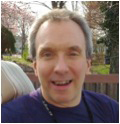
SDO Mission Director - Goddard Space Flight Center
The Pre-launch Team
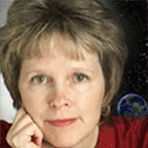
SDO Project Manager
Undergrad: BA in Economy, Duke University
Masters: Computer Science, Johns Hopkins
What do you do as SDO Project Manager?
As SDO Project Manager, I am responsible for the entire mission, from the building of the satellite, to overseeing that the technical requirements are met, to making sure that everything is running on cost and schedule. I pretty much spend most of my time in meetings - that's where I find out how things are going. But when the hardware starts being put together, that's when I get out of my office and onto the floor - where the action is!
What do you like most about your job?
My favorite part of my job is getting to work with a lot of different people. There are over 300 people working on SDO, 200 of whom work here at Goddard alone! It takes many different talents and skills to accomplish a successful mission. I feel privileged to work with the best.
When did you decide you wanted to work for NASA?
I decided I wanted to work for NASA when my college roommate got an internship here. I would listen with envy as she talked about her work on spaceflight missions. Since then, all I've wanted to do is work for NASA.
Where did you go to school and what degrees did you get?
In college, I got my undergraduate degree in Economy from Duke University and I received my Masters in Computer Science from Johns Hopkins.
What was the first job you ever had?
The first job I ever had was as an accounting clerk for an electrical utility. Back then, we had to do EVERYTHING by hand, now we do (almost) everything with computers!
How did you come to actually work for NASA?
I started at Goddard after college with a contractor working on LANDSAT 2 and 3. I worked for several different contractors, on GSFC missions, until I ended up working on the Hubble Space Telescope with a company called OAO Corp. At that point, there was a government opening and I applied. That was my first job as a civil servant, and what an exciting job it was! I worked on Hubble through its launch and first servicing mission.
How long have you been working for NASA?
I have been working at NASA since 1981. One of the best things about NASA is that you work in any field, from graphic design to computer science, from astrophysics to engineering. The opportunities are endless.

SDO Project Scientist
Undergrad: BS in Physics, University of Delaware
PhD: PhD in Physics, University of Florida
What do you do as SDO Project Scientist?
While the satellite is still on the ground, it is my job to make sure that changes to the satellite don't affect the science of it, or our ability to make observations.
What do you like most about your job?
My favorite part of my job is working with other scientists. Most of my time is spent in meetings. However, which I don't like too much.
When did you decide you wanted to work for NASA?
When I was growing up, I didn't know what I wanted to be because I wanted to be everything. I didn't decide to go into physics until I was an undergraduate and was forced to make a decision. I thought physics was interesting enough, so I pursued it.
Where did you go to school and what degrees did you get?
I got my undergraduate degree from University of Delaware and my PhD from the University of Florida. Both were in Physics.
What was the first job you ever had?
The first job I ever had was working at Burger King, specializing in french fries.
How did you come to actually work for NASA?
Before I became a civil servant for NASA, I was a contractor here for 15 years. I became a civil servant in 2005 when I accepted the job of SDO Project Scientist.
How long have you been working for NASA?
Well lets see... I worked for 15 years as a contractor and accepted a civil servant position in 2005 and we are now 2006... I guess you could say that I have been working for NASA for over 16 years!

HMI Principal Investigator
What do you do as SDO's HMI Principal Investigator?
I try to coordinate the efforts of a diverse group of scientists and engineers to develop the best science investigation we can with the resources available.
What do you like most about your job?
What I like most is the anticipation that we may discover something interesting and useful about the inner workings of the sun.
When did you decide you wanted to work for NASA?
I was in the 6th grade when Sputnik was launched, and the US followed shortly with our first satellites. That, plus a movie showing a scientist launching a balloon to measure cosmic rays, caught my interest. When I was about to start college, a friend gave me a set of pictures taken by the Ranger mission that took pictures as it crashed into the Moon. But then I got sidetracked with physics and never have worked for NASA. I now work at Stanford and am pleased that NASA is supporting our work.
Where did you go to school and what degrees did you get?
I went through high school in southern California then attended the University of California, Berkeley, to study Physics for both my B.A. and Ph.D. degrees.
What was the first job you ever had?
Besides mowing the neighbors' lawns and delivering the local newspaper when younger, my first adult job was a summer position working at the Union Oil Research Lab filling in for lab technicians on vacation.
How did you come to actually work for NASA?
Never have worked for NASA, but my PhD research involved analysis of data from the Explorer 33 and 35 missions to study the interplanetary magnetic field. Then, 15 years later I led the SOHO Michelson Doppler Imager (MDI) investigation. MDI showed that we could actually study the interior of the sun but needed a better instrument. SDO/HMI followed after 6 years of further study. Now, another 6 years, and we are about ready to put SDO in the sky and make the HMI and AIA and EVE instruments useful.
How long have you been working for NASA?
I have been using data obtained by NASA missions for more than 40 years. I am presently a Professor of Physics at Stanford University.
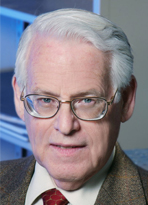
AIA Principal Investigator
What do you do as SDO's AIA Principal Investigator
As the Principal Investigator for AIA, I am responsible for the execution of the instrument development in order to meet the mission's science goals.
How does your work contribute to SDO's mission goals?
My job is to see that the mission's goals are achieved. In particular, I am concerned that the SDO data is available to the widest possible community in the most rapid and most useful form.
What do you like most about your job?
Getting to do the new science each mission allows.
When did you decide you wanted to work for NASA?
I don't work for NASA. NASA works for me by providing the infrastructure that allows the development of space missions.
Where did you go to school and what degrees did you get?
I went to the University of California, Los Angeles, and got a B.A. in Mathematics and Caltech and got a PhD in Physics.
What was the first job you ever had?
My first job was working in my Dad's drug store. My second job was as a Research Fellow at Caltech.
How did you come to actually work for NASA?
I don't work for NASA. I'm a Corporate Senior Fellow at Lockheed Martin and a Professor of Physics at Stanford University.
How long have you been working on NASA projects?
I've been working on NASA projects as the member of a science team since 1967.
How long have you been working on the SDO mission?
I've been working on the goals of SDO for two decades.

EVE PI
Undergrad: BS in Physics, Rhodes College
Masters: MS in Physics, Johns Hopkins University
PhD: PhD in Physics, Johns Hopkins University
What do you do as the EVE PI?
As EVE PI, I help define the science objectives for EVE, manage the EVE project, review the engineer hardware and software designs, support instrument calibrations, and will eventually support the analysis of the flight data.
What do you like most about your job?
I enjoy most the challenges of designing and defining new instruments and missions and the excitement in the pursue of new results in analyzing the data from the satellite missions.
When did you decide you wanted to work for NASA?
While my interest in space missions go way back to elementary school days, my first NASA opportunity arose during my junior year in college thanks to my physics professor, Dr. Jack Taylor, at Rhodes College.
Where did you go to school and what degrees did you get?
I received my BS in Physics from Rhodes College. I then went on to Johns Hopkings University were I got my Masters and PhD degree again in Physics.
What was the first job you ever had?
I worked as stock boy / cashier in a Piggly Wiggly grocery store for 3 years while in high school.
How did you come to actually work for NASA?
I am not a NASA employee. However, I have been working on NASA projects since 1982, first at Johns Hopkins University as a graduate student and now at University of Colorado.
How long have you been working on NASA Projects?
I have been working on NASA projects for 23 years, first on sounding rocket experiments as a graduate student and now on several NASA satellite missions. My research is focused primarily on the solar ultraviolet irradiance and its effects on Earth's atmosphere. I am PI of the TIMED SEE and SDO EVE satellite instrument programs at LASP and is also the PI of the SORCE mission since the original SORCE PI Dr. Gary Rottman retired in 2005.
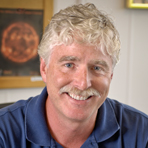
SDO Deputy Project Manager
WHAT DO YOU DO AS SDO DEPUTY PROJECT MANAGER?
Along with SDO Project Manager Liz Citrin, I oversee and ensure execution of all aspects of the mission. Together, we make sure SDO will meet all of its requirements and is delivered on time and within budget.
WHAT DO YOU LIKE MOST ABOUT YOUR JOB?
Working with a great team and watching this thing progress from a concept to an observatory, along with the sense of accomplishment that comes from knowing we built it right here at Goddard.
WHEN DID YOU DECIDE YOU WANTED TO WORK FOR NASA?
I was 9 when Neil Armstrong landed on the moon, and I guess that event planted the seed. It wasn't until after I graduated from college and began working in the aerospace industry that I came to the realization that NASA was where I wanted to be.
WHERE DID YOU GO TO SCHOOL AND WHAT DEGREES DID YOU GET?
I graduated from West Virginia University with a bachelor's degree in Industrial Engineering
WHAT WAS THE FIRST JOB YOU EVER HAD?
I worked at a marina putting boats in and out of the water, driving a fork lift, pumping gas and cleaning boats.
HOW DID YOU COME TO ACTUALLY WORK FOR NASA?
After completing a 3-year Project Management training program as a civilian employee of the Naval Air Command, I became aware of a job opening here at Goddard and went for it. That was 1989.
HOW LONG HAVE YOU BEEN WORKING ON THE SDO MISSION?
I've worked on the SDO mission since March 2002.
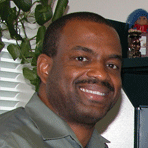
SDO Flight Software Product Development Lead
Undergrad: B.S. in Electrical Engineering, Hofstra University
Masters: Masters in Computer Science, George Washington University
WHAT DO YOU DO AS AN SDO FLIGHT SOFTWARE PRODUCT DEVELOPMENT LEAD?
I'm responsible for all that pertains to the SDO Flight Software (FSW) and its delivery to the SDO Spacecraft. I'm responsible for leading a team of approximately 28 engineers in the development and testing of the SDO Flight Software. This involves managing the cost and schedule, developing the actual Flight Code, planning the deployment of the code, allocating resources, collaborating with other subsystems to ascertain and document their FSW needs, developing diagnostic FSW to test Hardware boxes, as well as ensuring that adequate resources are available to maintain the Flight Software after SDO launch. Additionally, I'm responsible for delivering a portion of the Flight Software for the EVE instrument.
WHAT DO YOU LIKE MOST ABOUT YOUR JOB?
I like my job because it is challenging and there is always something interesting to do. The people I work with are extremely talented, and I really enjoy being able to solve problems in a collaborative fashion. Most importantly, I really enjoy being involved in developing solutions to complex problems.
WHEN DID YOU DECIDE YOU WANTED TO WORK FOR NASA?
When I was young I wanted to be a doctor. In High School I still wanted to do medicine, however, I saw my brother fix a television, and thought that was "way cool", and instantly switched my thoughts to electronics. After college, I interviewed with Motorola, Microsoft, AT&T, and NASA. My dad, an astronomy buff, and I were just overwhelmed with joy at the prospect of actually working for the Space Agency. After my interview with the NASA representative in Florida, I sat on pins and needles waiting for the response. Finally, the answer came, I packed my bags, left New York and the rest is, as they say, "history".
WHERE DID YOU GO TO SCHOOL AND WHAT DEGREES DID YOU GET?
After High School, I attended Technical Careers Institute, in Windsor CT., where I graduated with a Certificate as an Electronic Technician. Three years later, I attended Hofstra University, in Hempstead, NY where I graduated with a Bachelor of Science degree in Electrical Engineering. After I began my career here at Goddard, I enrolled at The George Washington University, in Washington, DC, where I graduated with a Master of Science in Computer Science.
WHAT WAS THE FIRST JOB YOU EVER HAD?
I was as a paperboy! However, I've worked on jobs ranging from working in the Sugar plants, to fixing video games in an arcade (I've also worked as a secretary in a small but busy office too).
HOW DID YOU COME TO ACTUALLY WORK FOR NASA?
I interviewed for a position at NASA at a Job fair in Florida.
HOW LONG HAVE YOU BEEN WORKING FOR NASA?
I first came to work here on June 18, 1990, so I guess that makes it about 17 years and two months. (Time flies...)
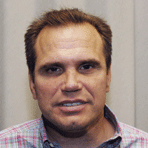
SDO Thermal Engineer
Undergrad: Mechanical Engineering from the University of Maryland Baltimore County.
Masters: Mechanical Engineering from the University of Maryland Baltimore County.
WHAT DO YOU DO AS AN SDO THERMAL ENGINEER?
I work together with a team of thermal engineers responsible for designing the thermal control systems that maintain the Spacecraft components within their temperature limits. It is my job to generate a mathematical and geometric thermal model of the SDO Spacecraft. I use the geometric model together with the orbital parameters to estimate the environmental heat load. The environmental heat load, internal power dissipations, radiative and conductive heat transfer, and thermal masses are included in the math model which is then solved for temperature predictions and heater power requirements.
WHAT DO YOU LIKE MOST ABOUT YOUR JOB?
The favorite part of my job is the analysis. I also enjoy seeing a thermal design mature from concept, through test verification and ultimately contributing to the mission success on orbit. What I don't like about it is all the long meetings.
WHEN DID YOU DECIDE YOU WANTED TO WORK FOR NASA?
I decided I wanted to work for NASA in college. When I was growing up I raced motorcycles. I was always interested in mechanical things. I like to understand how things work.
WHERE DID YOU GO TO SCHOOL AND WHAT DEGREES DID YOU GET?
I have my undergraduate and my Masters degrees in mechanical engineering from the University of Maryland Baltimore County.
WHAT WAS THE FIRST JOB YOU EVER HAD?
My first job that I ever had was as a newspaper delivery boy when I was 14.
HOW DID YOU COME TO ACTUALLY WORK FOR NASA?
In grad school, I applied for the NASA Graduate Student Researchers Program and was accepted. After graduate school I went to work at Fort Meade for the government for a year and then transferred to NASA. Before I came to Goddard, I was in a motorcycle accident, which left me in a wheelchair. It doesn't matter at Goddard.
HOW LONG HAVE YOU BEEN WORKING FOR NASA?
I have been working here since 2000.
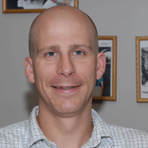
SDO Deployables Mechanical Engineer
Undergrad: B.S. in Mechanical Engineering, University of Iowa
What do you do as SDO Deployables Mechanical Engineer?
As the SDO Deployables Mechanical Engineer I work with 3 other people creating 3D software, generating drawings of different components, and running tests on everything.
What do you like most about your job?
I like having a mix of a lot of different jobs. I don't have to sit in front of a computer all day and I don't have to be on my feet the whole time either. I also enjoy doing hands on things... the techniccal stuff.
Where did you go to school and what degrees did you get?
I studied biology as a PreMed student for about three years. I finally decided that I liked doing mechanical stuff more and switched my major to Mechanical Engineering. I graduated from the University of Iowa with a degree in Mechanical Engineering and I had an opportunity to get my masters in Thermal Engineering, but I decided not to.
What was the first job you ever had?
The first job that I ever had was my own lawn-mowing business but eventually I became a busboy.
How did you come to actually work for NASA?
I started working for NASA out of luck because I was working for a contractor.
How long have you been working for NASA?
I have been working for NASA for over 7 years. I started in 1999 working on the Hubble Space Telescope. After 3 years I switched to SDO.
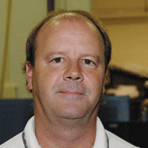
Goddard Power Systems Engineer and SDO Electrical Power Systems Lead
Undergrad: Mechanical Engineering from the University of Colorado at Boulder
Masters: Mechanical and Electrical Engineering from the University of Colorado at Boulder
WHAT DO YOU DO AS GODDARD POWER SYSTEMS ENGINEER AND SDO ELECTRICAL POWER SYSTEMS LEAD?
As a power systems engineer at Goddard I am normally involved in all aspects of the design, evaluation, optimization, and testing of components needed for a spacecraft electrical power system or, in many cases, an entire spacecraft electrical power system. I could certainly never do my job alone, fortunately there are about 9 or 10 people working with me on the SDO electrical power system whose expertise encompass electronics, photovoltaic, and battery technologies. As the SDO power systems lead engineer, I am basically responsible for making sure all of the electrical power equipment is designed and built to meet SDO's needs (requirements), as well as do my best to get all of the equipment built in time to support the SDO schedule.
WHAT DO YOU LIKE MOST ABOUT YOUR JOB?
My favorite part of my job is that each day has a different and unique set of technical challenges and I love solving technical problems. My least favorite part would have to be related to sitting in all of the different meetings that I'm normally required to attend each week.
WHEN DID YOU DECIDE YOU WANTED TO WORK FOR NASA?
My father was an engineer with RCA and supported the NASA Mercury, Gemini and Apollo programs and I vividly recall the first moon landing, which injected the notion deep down that I would love to be involved in something that challenging and rewarding. Since I particularly enjoyed the math and science aspects of school, by the time I was about 16, I already knew that I wanted to be an engineer, too.
WHERE DID YOU GO TO SCHOOL AND WHAT DEGREES DID YOU GET?
I received my Bachelors of Science in mechanical engineering degree in 1980 from the University of Colorado at Boulder. For graduate school, I attended Carnegie-Melon University part time for two years while working for Westinghouse but ended up back at the University of Colorado, after a job transfer to Colorado, where I finished earning my Master of Science degree in mechanical and electrical engineering in 1986.
WHAT WAS THE FIRST JOB YOU EVER HAD?
My very first job was as a paperboy at the age of 11, while my first "major" job was as a busboy at a restaurant called Perkin's Pancake House when I was 15.
HOW DID YOU COME TO ACTUALLY WORK FOR NASA?
I was working for Ford Aerospace as a supporting contractor for NASA when I was informed of a job opening, applied for it, and was fortunate enough to be selected.
HOW LONG HAVE YOU BEEN WORKING FOR NASA?
I started my career with NASA on August 12, 1990.
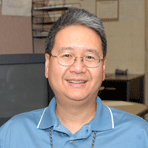
SDO Thermal Lead
Undergrad: Mechanical Engineering from the University of Maryland
Masters: Engineering Management from the University of Maryland, University College
WHAT DO YOU DO AS THE SDO THERMAL LEAD?
My function is to plan and coordinate thermal design and integration efforts from 5 thermal engineers in the team to meet the project design goals and schedule. I need to know and understand the mission design requirements to do the job.
WHAT DO YOU LIKE MOST ABOUT YOUR JOB?
What I like most about my job is working with other engineers. SDO has a great team of energetic and very smart group of engineers.
WHEN DID YOU DECIDE YOU WANTED TO WORK FOR NASA?
I wanted to work for NASA when I was in college. I thought working for NASA to send human and satellites to space to explore new worlds and new sciences is the coolest thing.
WHERE DID YOU GO TO SCHOOL AND WHAT DEGREES DID YOU GET?
I received the BS degree in Mechanical Engineering from the University of Maryland and went on to get the MS degree in Engineering Management from the University of Maryland, University College.
WHAT WAS THE FIRST JOB YOU EVER HAD?
I've had many jobs in my career starting from part time jobs like baby sitter, office cleaner, furniture maker, and office material printer. My first technical job was as a mechanical draftsmen's aid.
HOW DID YOU COME TO ACTUALLY WORK FOR NASA?
I channeled my career in such a way that I could work for private companies in the line of work that was applicable for NASA. Then when the opportunity presented, I applied for the job.
HOW LONG HAVE YOU BEEN WORKING FOR NASA?
I've been working at NASA for 18 years and 8 months but who's counting!!

SDO Ground System Implementation Manager and Mission Operations Control Manager
Undergrad: Electrical Engineering from the Pennsylvania State University
WHAT DO YOU DO AS SDO GROUND SYSTEM IMPLEMENTATION MANAGER AND THE MISSION OPERATIONS CONTROL MANAGER?
I lead and direct the development of the SDO Mission Operations Center (MOC). I am responsible for the MOC budget, schedule and resources. Oversee the implementation of all other subsystems within the SDO Ground System (GS). Provide technical assistance to the Ground System Manager (GSM) with requirements analysis, requirements development, software and hardware purchases, leading detailed design and technical discussions, and overseeing the implementation progress and requirement changes.
WHAT DO YOU LIKE MOST ABOUT YOUR JOB?
Challenges!! There is always something new going on and lots to learn. The opportunity to learn new things, make decisions, the pride of ownership, and working with good people is the favorite part of my job. It is great to work with many noble people on the team who share a common goal "getting the job done right".
WHEN DID YOU DECIDE YOU WANTED TO WORK FOR NASA?
I decided to work for NASA right after I graduated from college. I was amazed to hear and to see on television that people could walk on the moon. Of course I was too young then to comprehend many things about the Apollo program, but thought that only smart people could do it. I grew up in Cambodia and came to the United States in 1981. I never expected or dared to dream about working for NASA, but I made it. Thanks to the hard work that I did through out the high school and college years here, the school system that allowed me and the opportunity that I was given in this Country.
WHERE DID YOU GO TO SCHOOL AND WHAT DEGREES DID YOU GET?
I have an undergraduate degree in Electrical Engineering from the Pennsylvania State University, University Park, State College.
WHAT WAS THE FIRST JOB YOU EVER HAD?
My first job ever was as a cherry picker on a farm in the summer of 1981. I picked strawberries and blueberries, and then worked as a delivery man for a Sea Food market while going to school.
HOW DID YOU COME TO ACTUALLY WORK FOR NASA?
By luck, I was very lucky. I came to NASA as a coop student. I liked the job, the work environment, and the NASA reputation, so I stayed. I've been working here 18 years since I finished my coop.
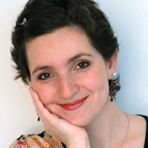
SDO Education and Public Outreach Manager
Undergrad: BA in International Relations, UNC - Chapel Hill
Masters: Masters in Contemporary European Political Culture and Identity, Paris III - La Sorbonne
Certificate: Certificate in Graphics Design from the Maryland Institute College of Art
What do you do as SDO Education and Public Outreach Manager?
As the Education and Public Outreach Manager I am responsible for developing and managing all of our efforts to bring the science of SDO and the Sun to the public. My outreach team is spread among facilities in Massachusetts, Colorado, Montana, California and here at Goddard. We work with Museums, astronomy clubs, schools and our surrounding communities. I also do a lot of traveling to various conferences where I teach other EPO professionals, scientists and teachers about SDO, the Sun and Space Weather. As if managing a team of 5 wasn't enough, I also do all of the graphics and web design for the satellite.
What do you like most about your job?
There are two things I love most about my job. One is getting paid to travel all over the country and meet new people. The second and most fun is being able to do fun activities with students, teachers and families.
When did you decide you wanted to work for NASA?
Like a lot of people, growing up I wanted to be an astronaut. After watching the Challenger accident on TV in my 6th grade science class I decided NASA was not actually for me. At the time, I did not know that NASA was much much more than just the astronaut program. It wansn't until much later that I realized all the different jobs and career paths one could follow.
Where did you go to school and what degrees did you get?
I received my undergraduate degree in political science from the University of North Carolina at Chapel Hill. I then went on and I got my Masters degree in Contemporary European Political Culture and Identity from La Sorbonne in Paris. I recently went back to school briefly to obtain a certificate in graphic design from the Maryland Institute College of Art.
What was the first job you ever had?
My very first paid job was as an ice cream scooper at in my University Student Union. I worked just long enough to earn the money I needed to go to Puerto Rico for a week!
How did you come to actually work for NASA?
This is a funny story and not typical of how one actually gets a job for NASA. I sat next to someone on a plane who at the time worked for the SOHO Mission at Goddard. I obtained my first job here at NASA through him Two months later.
How long have you been working for NASA?
I started working for NASA in 2000 for ESA (European Space Agency) on SOHO. Two years later I was hired as the SDO Education and Public Outreach Manager... three years later I am still here.
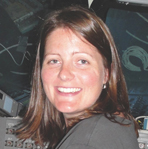
SDO Education and Public Outreach Manager - Goddard Space Flight Center